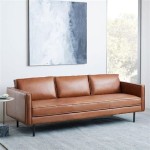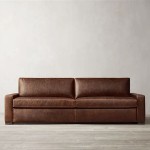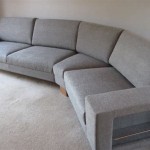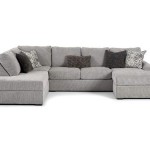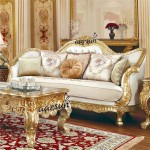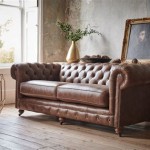Upholstery Sofa Cushions: A Comprehensive Guide
Sofa cushions are integral to the comfort, aesthetic appeal, and longevity of upholstered sofas. They provide support, contribute to the overall style, and protect the sofa frame from wear and tear. Understanding the different types of cushions available, their construction, and maintenance is crucial for making informed decisions when purchasing a sofa or replacing existing cushions.
This article provides a comprehensive overview of upholstery sofa cushions, covering various aspects such as cushion types, filling materials, fabric options, construction methods, and maintenance techniques. The aim is to provide readers with the knowledge necessary to choose the optimal cushions for their specific needs and preferences.
Types of Sofa Cushions
Sofa cushions are broadly categorized based on their construction and attachment to the sofa frame. The most common types include loose cushions, attached cushions, and semi-attached cushions.
Loose Cushions: These cushions are individual units that are not directly attached to the sofa frame. They offer flexibility in arrangement, allowing for easy flipping, rotating, and replacement. Loose cushions are typically reversible, offering two usable sides and extending their lifespan. The ease of removal also simplifies cleaning and maintenance.
Loose cushions come in various shapes and sizes, including square, rectangular, and round. Their flexibility also allows for mixing and matching different fabrics and patterns to create a customized look. However, loose cushions may require occasional fluffing and arrangement to maintain their shape and appearance. They can also shift or slide during use, which can be a minor inconvenience.
Attached Cushions: Attached cushions are permanently affixed to the sofa frame, typically sewn or stapled in place. This construction method results in a more streamlined and tailored appearance. Attached cushions eliminate the need for fluffing and arrangement, as they remain securely in place. They also prevent items from slipping between the cushions and the sofa frame.
However, attached cushions offer less flexibility than loose cushions. They cannot be easily flipped or rotated, which can lead to uneven wear. Replacing attached cushions is also more challenging and may require professional upholstery services. Cleaning attached cushions can be more difficult, as the fabric cannot be easily removed from the frame.
Semi-Attached Cushions: These cushions offer a compromise between loose and attached cushions. They are typically attached to the sofa frame along one edge, often the back, while the remaining edges are free. This construction method provides some of the benefits of both loose and attached cushions. Semi-attached cushions offer a more tailored appearance than loose cushions while still allowing for some flexibility in movement and cleaning. They are less likely to shift or slide than loose cushions but can still be removed for maintenance or replacement, although the process is not as straightforward as with fully loose cushions.
Understanding Cushion Fill Materials
The fill material of a sofa cushion significantly impacts its comfort, support, and durability. Common fill materials include foam, fiber, feathers, and combinations of these materials.
Foam: Foam is a widely used cushion fill material due to its affordability, availability, and versatility. Different types of foam offer varying levels of firmness and support. High-density foam provides firm support and is resistant to compression, making it suitable for cushions that will experience frequent use. Low-density foam is softer and more pliable but may not offer as much support. Memory foam conforms to the body's shape, providing customized comfort and pressure relief. Foam cushions are relatively easy to maintain and are resistant to allergens and dust mites.
The durability of foam cushions depends on the quality and density of the foam. Lower-quality foam may break down or lose its shape over time. Foam cushions can also retain heat, which may be a concern in warmer climates.
Fiber: Fiberfill is a synthetic material made from polyester or other synthetic fibers. It is a lightweight and affordable option that provides a soft and plush feel. Fiber cushions are typically less expensive than foam or feather cushions. They are also hypoallergenic and resistant to mold and mildew.
Fiber cushions tend to flatten and lose their shape over time, requiring frequent fluffing to maintain their appearance. They may not offer as much support as foam cushions, making them less suitable for individuals who require firm seating.
Feathers: Feather cushions are filled with duck or goose feathers, providing a luxurious and comfortable feel. They conform to the body's shape and offer excellent support. Feather cushions are known for their breathability and ability to regulate temperature. They are often combined with down, which is the soft undercoating of feathers, to enhance their softness and comfort.
Feather cushions require regular fluffing to maintain their shape and prevent the feathers from clumping together. They can also be more expensive than foam or fiber cushions. Some individuals may be allergic to feathers, making them unsuitable for certain households. Feather cushions can also leak small feathers over time, requiring occasional cleaning.
Combination Fills: Many sofa cushions utilize a combination of fill materials to achieve a balance of comfort, support, and durability. A common combination is a foam core wrapped in a layer of fiber or feathers. This construction method provides the support of foam with the softness and comfort of fiber or feathers. Another common combination is a mixture of feathers and down, which offers a luxurious and comfortable feel while minimizing the tendency for feathers to clump together.
Choosing the Right Upholstery Fabric
The upholstery fabric plays a crucial role in the overall appearance, durability, and comfort of sofa cushions. Various fabric options are available, each with its unique characteristics and suitability for different lifestyles and preferences.
Cotton: Cotton is a natural fiber that is soft, breathable, and relatively affordable. It is a popular choice for upholstery fabric due to its comfort and versatility. Cotton fabrics are available in a wide range of colors and patterns, making it easy to find a style that complements the existing decor. Cotton is also relatively easy to clean, although it can be susceptible to staining and fading. It is generally not as durable as synthetic fabrics and may require more frequent replacement.
Linen: Linen is another natural fiber that is known for its strength, durability, and elegant appearance. It has a distinctive texture that adds visual interest to sofa cushions. Linen is breathable and comfortable, making it suitable for warm climates. However, linen is prone to wrinkling and may require ironing to maintain a smooth appearance. It is also more susceptible to staining than some other fabrics.
Polyester: Polyester is a synthetic fabric that is highly durable, stain-resistant, and easy to clean. It is a popular choice for households with children or pets. Polyester fabrics are available in a wide range of colors and patterns, often mimicking the appearance of natural fibers. Polyester is resistant to fading and shrinking, making it a long-lasting option. However, it is not as breathable as natural fibers and may feel less comfortable in warm weather.
Microfiber: Microfiber is a synthetic fabric made from tightly woven fibers, resulting in a soft and plush feel. It is highly durable, stain-resistant, and easy to clean. Microfiber is also resistant to fading and wrinkling. It is a popular choice for households with pets, as it is resistant to scratching and shedding. However, microfiber can attract dust and lint and may require regular vacuuming.
Leather: Leather is a natural material that is known for its durability, elegance, and luxurious feel. It is resistant to wear and tear and develops a unique patina over time. Leather is relatively easy to clean and maintain. However, it can be expensive and may require special cleaning products. Leather is also susceptible to scratches and stains.
The selection of the appropriate upholstery fabric should consider personal preferences, lifestyle, and the intended use of the sofa. Durability, stain resistance, and ease of cleaning are important factors to consider for households with children or pets. Comfort and appearance are also critical considerations for creating a welcoming and stylish living space.

Tips A Test To Help You Choose The Right Sofa Cushion Material

How To Choose The Right Cushions For Your Upholstered Furniture Renaissance Custom Upholstery Company

4 Secrets To Finding Upholstery Foam A Erfly House

Replacement Foam Sofa Cushions Super

Tutorial Diy Upholstery Sofa Rehab A Jennuine Life

Handmade Sofa With Cushions Upholstery Fabrics Romo Group Sofás Modulares Sofá Bajo Decoración De Unas

Sofa Cushion Boxed Covers Foam Super

Down Vs Foam Sofa Cushions Circle Furniture

Replacement Sofa Cushions Buy Foam

The Best Foam To Use For Sofa Cushions Good Better On Seat Reupholstery

